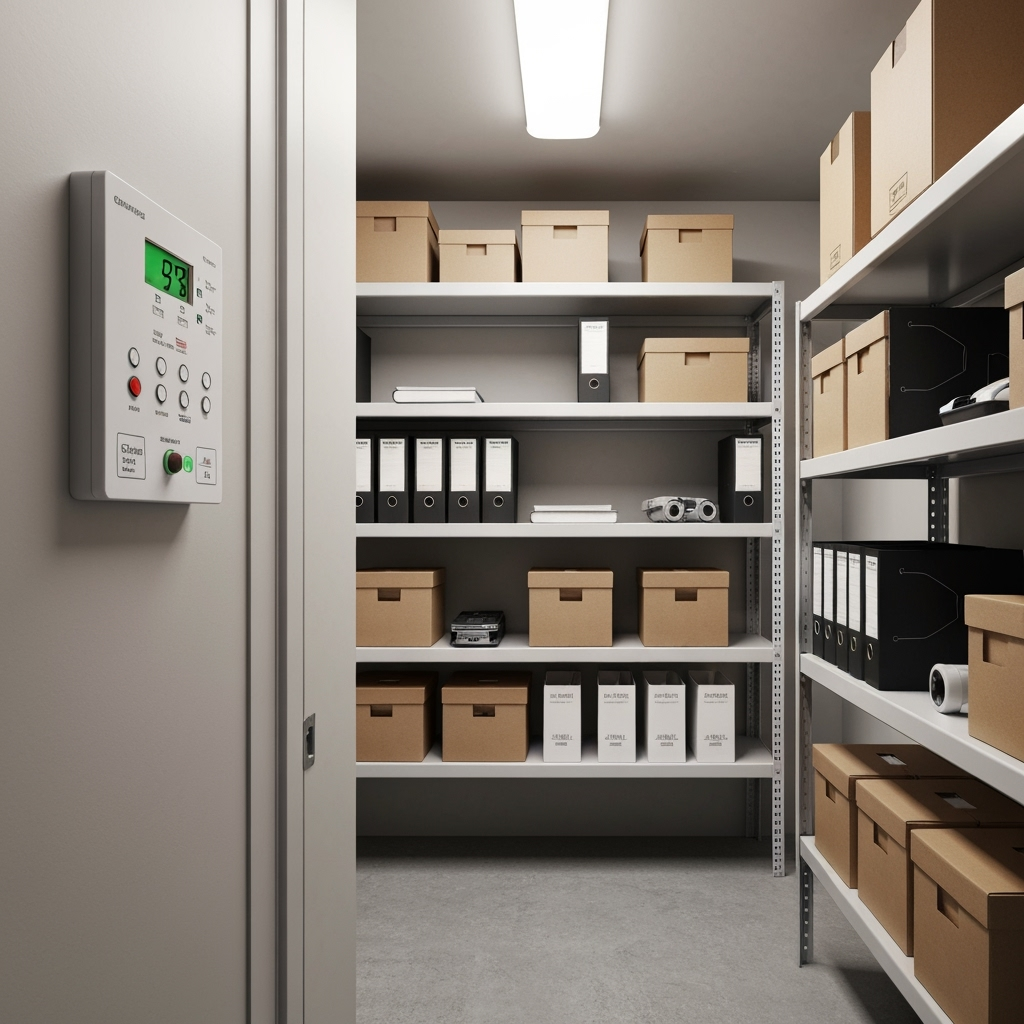
Why Temperature Control Matters for Your Business Inventory
For small business owners, inventory represents a significant investment that needs protection from environmental factors that could impact its value and integrity. Temperature-controlled storage offers a reliable solution for preserving inventory quality while maintaining optimal business operations.
Key Benefits of Climate-Controlled Storage for Business Inventory
• Consistent temperature and humidity levels protect sensitive materials
• Prevention of mold, mildew, and deterioration
• Extended shelf life for temperature-sensitive products
• Protection from extreme seasonal changes
• Peace of mind for valuable inventory

Choosing the Right Climate-Controlled Storage Solution
1. Assess Your Inventory Needs
Before selecting a storage unit, evaluate your inventory’s specific requirements:
• Temperature sensitivity of materials
• Required humidity levels
• Seasonal storage patterns
• Growth projections
• Access frequency needs
2. Essential Features to Look For
• Reliable temperature monitoring systems
• Adequate ventilation
• Proper insulation
• Security measures
• Easy accessibility
• Flexible space options
Best Practices for Temperature-Controlled Storage
Organizing Your Space
• Use sturdy shelving units for proper air circulation
• Keep items off the floor using pallets
• Create clear aisles for easy access
• Label everything clearly
• Maintain inventory tracking systems
Monitoring and Maintenance
• Regular temperature checks
• Humidity level monitoring
• Periodic inventory inspections
• Proper packaging materials
• Emergency response plan
Industries That Benefit Most from Climate-Controlled Storage
• Retail businesses with seasonal inventory
• E-commerce companies
• Pharmaceutical and medical supplies
• Electronics and technology products
• Textile and fashion businesses
• Food and beverage companies
• Arts and crafts suppliers
Cost Considerations and ROI
While climate-controlled storage may have higher upfront costs, consider these long-term benefits:
• Reduced inventory loss
• Lower insurance claims
• Extended product shelf life
• Improved customer satisfaction
• Enhanced business reputation
Tips for Maximizing Your Storage Investment
1. Choose the right unit size to avoid overpaying
2. Implement efficient organization systems
3. Use vertical space effectively
4. Consider shared storage options for seasonal needs
5. Negotiate favorable lease terms
6. Regular maintenance and cleaning
Security and Insurance Considerations
Protect your inventory investment with:
• Comprehensive insurance coverage
• Security monitoring systems
• Access control measures
• Regular security audits
• Emergency contact procedures
Making the Transition to Climate-Controlled Storage
Follow these steps for a smooth transition:
1. Inventory assessment and organization
2. Proper packaging and labeling
3. Transportation planning
4. Storage layout design
5. Staff training on procedures
6. Documentation systems setup
Conclusion
Investing in climate-controlled storage is a smart business decision that protects your inventory and supports growth. By following these guidelines and best practices, you can maximize the benefits of temperature-controlled storage while ensuring your business inventory remains in optimal condition year-round.










Leave a Reply